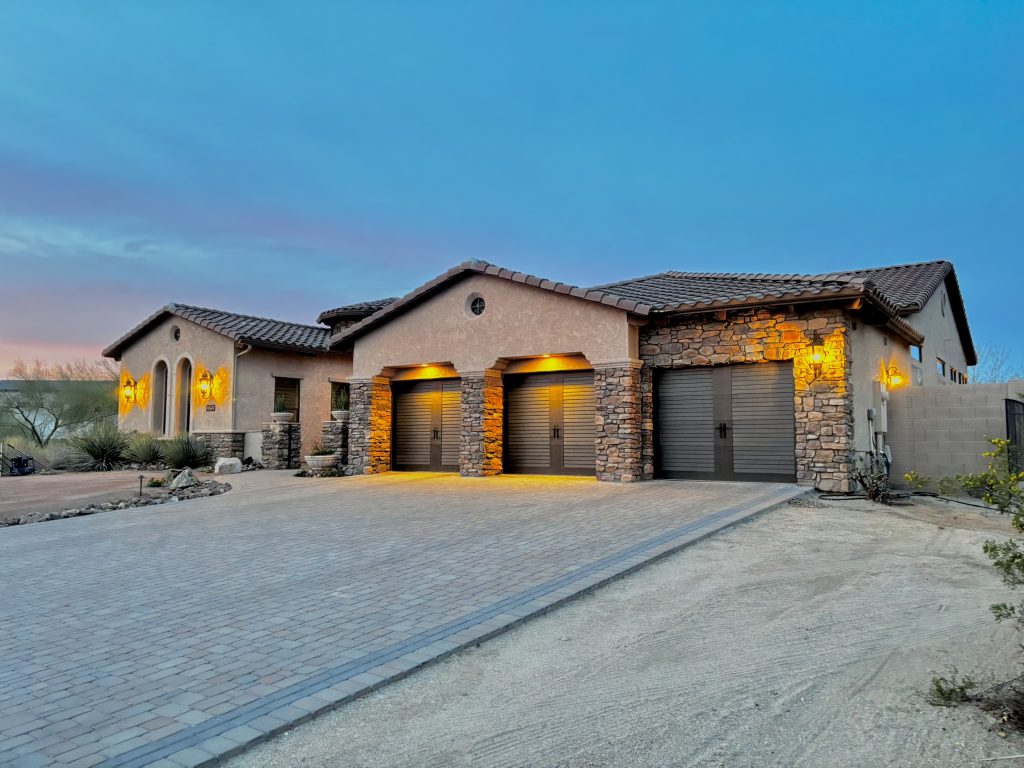Introduction
When it comes to home maintenance, one of the most overlooked yet critical components is the garage door. The garage door not only enhances the curb appeal of your property but also serves as a vital entry point for your vehicle and supplies. For residents of Mesa, AZ, understanding the anatomy of a garage door can save you time, money, and stress when repairs are needed. This article Garage Door Repair delves into the various parts that make up your garage door system and provides insights into common repairs that may arise. Whether you're considering DIY repairs or looking for professional help such as Garage Door Repair Mesa AZ services, this guide offers invaluable information.
Understanding the Anatomy of a Garage Door: Important Parts and Repairs for Residents of Mesa, AZ
1. The Garage Door Panel
The garage door panel is the most visible part of the system. It’s generally made from materials like steel, aluminum, or wood.
1.1 Types of Garage Door Panels
- Steel Panels: Durable and low-maintenance. Aluminum Panels: Lightweight and resistant to rust. Wood Panels: Aesthetic appeal but require more upkeep.
Each material has its pros and cons depending on climate conditions in Mesa.
2. Garage Door Tracks
These metal rails guide the movement of your garage door as it opens and closes.
2.1 Importance of Proper Alignment
Misaligned tracks can lead to significant operational issues. If you notice grinding noises or difficulty opening or closing your door, it might be time to check those tracks.

3. Garage Door Springs
Springs are crucial for lifting and lowering your door smoothly.

3.1 Types of Springs
- Torsion Springs: Located above the door; they offer greater lifting power. Extension Springs: Found on each side; they expand when the door lowers.
Regular inspections can prevent injuries from broken springs.
4. The Garage Door Opener
The opener controls the mechanism that lifts your door.
4.1 Types of Openers
- Chain Drive: Affordable but can be noisy. Belt Drive: Quieter operation with less maintenance. Jackshaft Drive: Ideal for saving ceiling space in smaller garages.
Choosing the right type based on your lifestyle is essential.
5. Safety Sensors
Safety sensors prevent accidents by detecting obstacles in the path of closing doors.
5.1 How Do They Work?
If something blocks these sensors while closing, it will reverse direction immediately—an essential feature for homes with pets or children.

6. Remote Controls
Modern garage doors come equipped with remote controls that provide convenience.
6.1 Smart Technology Options
Consider investing in smart technology for added security features like remote access through smartphones or alerts when someone opens your garage.
7. Weather Stripping
Weather stripping prevents drafts from entering your garage while also keeping pests out.
7.1 Maintenance Tips
Check regularly for wear and tear; replacing it is simple but can save on energy costs significantly!
8. Hinges and Rollers
Hinges connect panels together while rollers help them glide along tracks smoothly.
8.1 Common Issues
Worn-out rollers can create noise during operation; lubricating them periodically can extend their lifespan significantly.
9. Emergency Release Mechanism
This feature allows you to open your garage manually in case of a power failure or malfunctioning opener.
9.1 How to Use It?
Familiarize yourself with this mechanism so you’re prepared during emergencies—especially important in storm-prone areas like Arizona!
10. Common Garage Door Problems
Understanding typical issues can help you diagnose problems early before they escalate:
- Unresponsive remote control Noisy operation Misalignment issues
Recognizing these symptoms means quicker solutions!
Frequently Asked Questions (FAQs)
1. What should I do if my garage door won't open?
First, check if there’s power to the opener; if not, consider calling professionals like Stapley Action Garage Door Repair Mesa AZ for assistance.
2. How often should I have my garage door serviced?
A yearly inspection is recommended to ensure all components are functioning correctly—think preventative maintenance!
3. Can I fix my garage door myself?
Some minor repairs can be handled at home; however, anything involving springs or cables should be left to professionals due to safety risks involved.
4. What are signs that I need new springs?
If you hear loud bangs when operating the door or if it refuses to stay open on its own, it's likely time for new springs from reliable sources like Garage Door Repair Mesa AZ services.
5. Are there energy-efficient options available?
Yes! Insulated doors help maintain temperature within garages which could potentially lower energy bills over time—perfect for Arizona's heat!
6. How much does it cost to repair my garage door?
Costs vary widely based on severity and parts needed; getting quotes from local services such as Stapley Action Garage Door Repair Mesa AZ can give you better clarity on expenses involved.
Conclusion
In conclusion, understanding the anatomy of a garage door is essential for every resident in Mesa, AZ—both for daily usage and emergency situations alike! Knowing about crucial components such as panels, springs, openers, sensors and more empowers homeowners not just with knowledge but also equips them with tools necessary for effective maintenance routines down-the-line! Regular inspections combined with quick fixes ensures longevity while avoiding costly replacements later on! So next time you're facing an issue related to this vital part of home infrastructure—whether it's through DIY efforts or reaching out professionally via sources like Stapley Action Garage Door Repair Mesa AZ—you'll feel more confident making informed decisions every step along way!